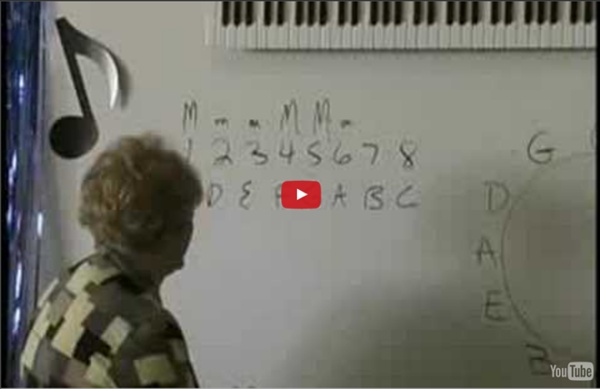



ear training www.guitarhabits Photo by Jsome1 Playing 3 notes per string exercises is something I do on a regular basis. I use them to warm up, to become a faster guitar player and to spice up my improvisation. 3 notes per string licks and scales are generally used for speed picking. If you practice these exercises properly and often enough you will increase your speed. The 3 notes per string exercises are played using the alternate picking technique. Once you get the hang of it, it can become quite addictive, but be careful though. The one and only reason why these monster guitar players become so incredibly fast is that they practice long hours for days, weeks, months and years.
how music works How Music Works is a comprehensive suite of multimedia tutorials which explain music in clear, simple language you can relate to. Packed with 115 topics in nine tutorials, and illustrated with 360 diagrams and 750 demonstration sounds, the tutorials start with the very basics of music and advance to topics which are valuable even for professional musicians. Whatever musical instrument or style you are interested in, these tutorials will be an essential source of information and guidance for years to come. The How Music Works tutorials are available online at www.howmusicworks.org but these tutorials are not printable and do not have the sounds. To get the full benefit of the tutorials, the ChordWizard Music Theory software is highly recommended.
Free VST Plugins! Are you looking for high quality VST plugins which you can download and use for free? You’re certainly in the right place! On this page, you’ll find the core part of BPB – a constantly updated directory of essential freeware VST instruments and effects for Windows and Mac (formerly known as BPB Freeware Studio). Welcome and enjoy your stay! Alternatively, you can browse through all the freeware tools (including freeware plugins, host applications, free audio editors, etc.) which have been featured in our News section so far, by visiting the Free Software Archive on BPB. Two years ago, we started a series of articles covering the best freeware plugin releases from each year. Scroll below to see our directory of the finest free music making software. Free VST Plugin Directory Part 1: Best Free VST Host Applications A selection of free audio editors and applications which can host VST plugins. Part 2: Best Freeware VST Effects A selection of freeware effects in VST/AU plugin formats:
theta - music ear training Thinking inside the Box: a complete EQ tutorial - dnbscene.com ContentsThis article was originally written and published on dnbscene.com in 2003. Part One: Intro To begin: an anecdote. I started making music with Impulse Tracker. After a few years of gaining decidedly unprofessional results with that, I moved onto Buzz. Slowly I came to realise the problem. EQ and compression are simply the two most important tools in music production. Think of it this way. My mistake - and, I think, the mistake made by many learning producers - was to be tempted by the more exciting task of choosing the colour schemes and leather sofas, when my walls could be knocked down by a sneeze and my roof was made of paper. Hence this tutorial. Now I could simply do a lightning quick tutorial on compression - I could say, for example, "for basslines it's best to compress at a ratio of 3:1, threshold -6db" or whatever (that's a totally fictional example by the way). My central concept is that producers in the digital domain are effectively working inside a box.
SacredGeometryOfMusic The Sacred Geometry Of Music by Andrew Lorimer Music uses the laws of vibration to manifest aurally what exists at the center of everything. Into our reality springs a non-visual harmonic law that is universal. The notes and intervals of music speak directly to the chakra centers and causes them to vibrate in harmony to the vibration of a string or vocal chords, speakers moving through the air, or the sound of someone’s lips making a farting noise through a metal tube. Music uses the laws of physics and mathematics to bring out an emotional response in the listener. Clock Harmonisphere The mathematics of the harmonisphere are amazing. When we measure the same chords on the harmonisphere, the seven chords have the same mirrored combinations as the piano:
- Tracking : Resource Library and More Information Look here for articles on applied recording techniques and mic placement. It all starts here! Acoustic Guitar Tracking the acoustic guitar is a huge subject, because so much contributes to the final sound—player, instrument, room acoustics, mic choice and placement, effects, and more. Here are some timeless articles with solid advice to get you started on developing your own acoustic recording toolbox. Electric Guitar The electric guitar is the central sound of rock music, and has influenced everything from blues and country to electronica. Bass Recording the bass can be as straightforward as a simple DI to the console or as complex as multiple mics on an acoustic bass fiddle or giant amp stack. Other Guitars The archtop, the dobro, the parlor guitar, the pedal steel—scary to the newcomer, each with its own challenges. Drums & Percussion Miking drums is an art form. Vocals The human voice is the most recognizable sound to the human brain. Horns & Woodwinds Piano Strings Psychology & Coaching
Free Music Making Software, Ultimate Collection On this page we compile our roundups of the best free music making software available for music producers, recording musicians and DJ’s, complete with download links. The best synths, effects, DAWs and beats all for free. Divided into category. So without further ado… Below is a list with links to each page rounding up the best free musc making software in each category Comments comments